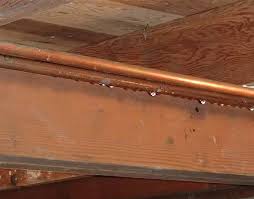Stopping Water Does Not Guarantee a Dry Basement

Having a dry basement means not having water seeping in through the walls and up from the floor. That is certainly a correct statement. There are several good and effective ways to waterproof your basement. But even if you stop water from coming into the basement from outside, you might still have a damp, musty smelling basement. There is a reason that a totally sealed basement might not actually be a dry basement. Here’s why.

When you mention wet basements, most people will instantly think of water on the walls and flooding the floor and they forget that water, in the form of water vapor and humidity, can enter your basement through the air. When warm, moist air comes in contact with cool surfaces, like concrete floors and walls, cold water pipes, and such, the moisture in the air condenses on those surfaces. This is what happens when there is morning dew outside. The outside air temperature has dropped below the dew point. The dew point varies with the relative humidity in the air. Because basements tend to stay cool naturally, the temperature of the walls and water pipes often is lower than the dew point for the relative humidity in your house air.
Condensation is real water and is actually the primary cause of that musty basement smell we all hate. It is quite common to find wet surfaces in an otherwise dry basement. Controlling humidity in basements is critical. To do this, you need to cover the potential condensing surfaces with insulation that makes direct contact with the surface, just like a cozy on a beer can. If the air cannot touch the cool surface, condensation cannot happen.

Placing fiberglass insulation up against a basement wall won’t work. It does not make enough direct contact with the surfaces. In fact, it can make matters worse. Air can pass through fiberglass insulation easily. When it does this, condensation forms on the wall behind the insulation and you have the perfect growing condition for mold. And you’ll never know the mold is there because the insulation covers it.
Use rigid or spray in foam insulation on walls, wrap pipes with foam insulating pipe sleeves, and also use a dehumidifier to keep the relative humidity lower. These are the best ways to be sure you have a dry basement.
I hope this information is helpful to you. You might want to get yourself a copy of my best-seller, Designing Your Perfect House. It is chockfull of valuable tips and advice that will save you many times the cost of the book on your house building or remodeling project. You might also like The Well-Centered Home: Simple Steps to Increase Mindfulness, Self-Awareness, and Happiness Where You Live. It will show you how to make your home a happy place.

